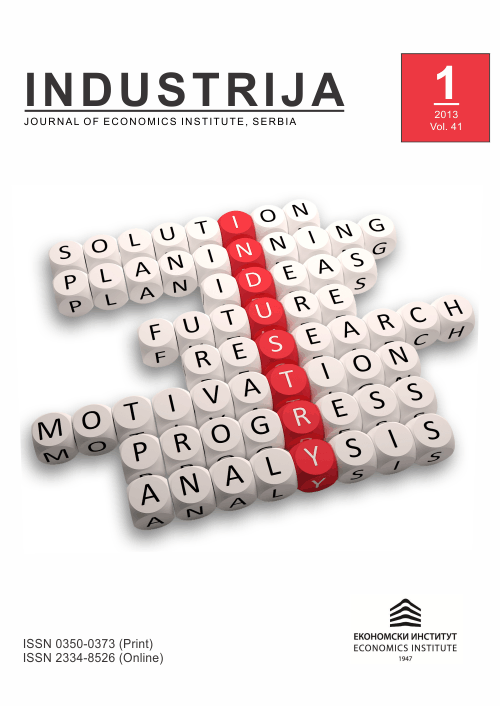The importance of determinants influencing FDI inflows within the CEE region
Sažetak
In this paper, we examine the variables influencing FDI inflows in CEE countries and the sample includes fourteen countries within the CEE region. The variables analyzed in the paper are: financial sector development, human capital and physical infrastructure. Empirical analysis, presented in the paper, indicates that the countries with well developed capital markets can enhance the level of FDI inflows. Moreover, the same analysis points out a clear link between the total labor force related to a local market and FDI inflows. Finally, the correlation between physical infrastructure development and FDI inflows is set. In the end, creating stable and efficient business environment may influence a higher level of both foreign and domestic investments within the country.
Reference
Allen, F., & Gale, D. (1999). Diversity of opinion and financing of new technologies. European Economic Review, 39, 179-209.
Alfaro, L., Chanda, A., Kalemli-Ozcan, S., & Sayek, S. (2004). FDI and economic growth: the role of local financial markets. Journal of International Economics, 64(1), 89-112. doi:10.1016/S0022-1996(03)00081-3
Ayyagari, M., Demirguc-Kunt, A., & Maksimovic, V. (2012). Financing of firms in developing countries. The World Bank, Financial and Private Sector Development. April.
-Business Info Group. (2012). Foreign Direct Investments in Serbia 2001-2011. Beograd.
Blomstr, (., & Kokko, A. (2003). Human Capital and Inward FDI, The European Institute of Japanese Studies. The European Institute of Japanese Studies. Working Paper no. 167.
Demirgüç-Kunt, A., & Maksimovic, V. (2002). Funding growth in bank-based and market-based financial systems: evidence from firm-level data. Journal of Financial Economics, 65(3), 337-363. doi:10.1016/S0304-405X(02)00145-9
-Ernst & Young. (2012). 2012 European attractiveness survey. Retrieved from http://www.ey.com/Publication/vwLUAssets/Attractiveness_2012_europe/$FILE/Attractiveness_2012_europe.pdf
Hermes, N., & Lensink, R. (2003). Foreign Direct Investment, Financial Development and Economic Growth. Journal of Development Studies, 142-163.
Khadaroo, A.J., & Seetanah, B. (2010). Transport Infrastructure and FDI. Journal of International Development, 22, 103-123.
Rehman, A., Ilyas, M., Alam, H., & Akram, M. (2011). The Impact of Infrastructure on Foreign Direct Investment: The case of Pakistan. International Journal of Business and Management, 6(5),
-SIEPA. (2012). Doing Business in Serbia. Belgrade.
van den Berg, H. (2001). Economic Growth and Development. Singapore: McGraw-Hill.
World Bank Database. World Bank Indicators, Retrieved from http://databank.worldbank.org/ddp/home.do?Step=1&id=4

